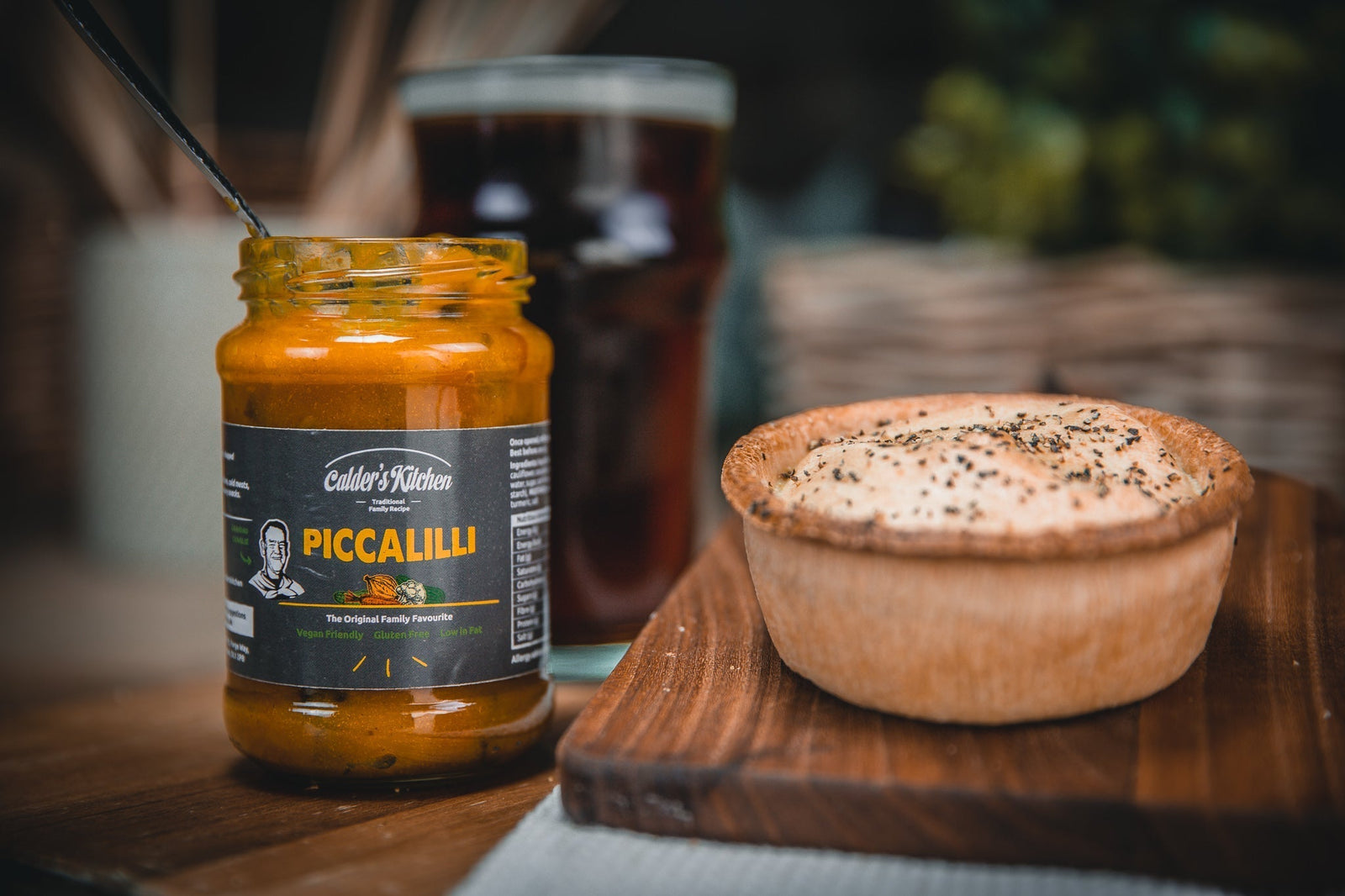⏰ 🎄 Order by 2pm this Friday to receive your order for Christmas 📦 🚛
⏰ 🎄 Order by 2pm this Friday to receive your order for Christmas 📦 🚛
Add description, images, menus and links to your mega menu
A column with no settings can be used as a spacer
Link to your collections, sales and even external links
Add up to five columns
Add description, images, menus and links to your mega menu
A column with no settings can be used as a spacer
Link to your collections, sales and even external links
Add up to five columns
The Origin of Piccalilli - Britain's best loved colourful condiment with a modern day twist!
August 10, 2025

There's barely a week goes by where we don't get asked the question from a curious inquisitor at our market stall 'What even is Piccalilli?' In fact, if we had a pound for every time we are asked for an explanation of the difference between Chlillililli and Sillylilli, we could probably retire without ever needing to sell another jar!
So we thought we'd help. Bringing you - The Colourful History of Britain’s Beloved Pickle with a Global Twist:
Few condiments are as cheerful on the plate — or as intriguing in their history — as piccalilli. That bright yellow jar of tangy, crunchy vegetables has been a fixture on British tables for centuries. But where did it come from? Like many great food traditions, piccalilli is the product of culinary travel, trade, and a bit of British ingenuity.
A Taste with a Passport
Piccalilli is often described as “the British version of Indian pickle.” Its roots can be traced back to the 18th century, when Britain’s expanding trade routes brought exotic spices and flavours from India, the Caribbean, and beyond.
In the days before refrigeration, preserving vegetables in vinegar, spices, and mustard wasn’t just tasty — it was essential. Cooks across England began adapting recipes inspired by Indian achars (spicy, tangy pickled vegetables) to suit local tastes and available produce.
The result was a vibrant mustard-yellow relish, made from chopped cauliflower, gherkins, onions, and other garden vegetables, with a spice mix that hinted at faraway lands.
From “Paco-Lilla” to Piccalilli
The earliest printed recipes for piccalilli appeared in the mid-1700s. In 1758, cookery writer Hannah Glasse published a recipe for “Paco-Lilla, or Indian Pickle” in her famous book The Art of Cookery Made Plain and Easy.
Her version used vinegar, mustard seed, ginger, turmeric, and pepper to preserve a mix of vegetables — recognisably similar to the piccalilli we know today. Over the next century, the name evolved into “piccalilli,” and it became a standard feature in British cookbooks.
A Working-Class Staple and Festive Favourite
By the Victorian era, piccalilli had truly cemented itself in British food culture. It was a popular addition to Ploughman’s lunches, cold meat platters, and festive buffets.
Its bright colour and sharp, tangy flavour cut through rich meats and cheeses, making it the perfect partner for hearty British fare. Best of all, it could be made in bulk during the summer glut of vegetables and enjoyed all winter long.
This is certainly something our family and no doubt thousands of others resonate with, in my case a memory of my Grandad (Charlie) getting busy in the kitchen filling large jars with piccalilli made from vegetables he grew in his back garden.
Piccalilli Today
Modern piccalilli is still made with the same core principles: fresh vegetables, a vinegar-and-spice pickle, and that iconic mustard-yellow colour from turmeric. We're not quite sure when or why the mainstream piccalilli found in British supermarkets today changed in its appearance and flavour, but what we do know - and it's a problem we are helping to solve - is that real, traditional piccalilli has become extremely difficult to find. In fact many of the budget, supermarket versions have tainted the reputation of this much loved condiment giving it a bad reputation!
At Calder’s Kitchen, we honour the tradition with Grandad Charlie’s original recipe, but we also give it a twist — from the gentle heat of our Chillililli to the fragrant spice blend of our Sillylilli. Each jar is hand-prepared, just as piccalilli would have been in kitchens centuries ago, but with flavours to suit today’s tastes.
Why We Still Love It
Piccalilli’s appeal lies in its balance — sharp but sweet, crunchy yet smooth, comforting but exotic. It’s a true reflection of Britain’s culinary history: shaped by global influences, adapted to local produce, and loved by generations.
So next time you spread a spoonful of piccalilli onto a cheese sandwich or dollop it beside a pork pie, you’re not just enjoying a condiment — you’re tasting over 250 years of history.
Have you tried all three of our piccalilli flavours?
Explore our bundles and gift sets and bring a little history — with a Calder’s twist — to your table.


